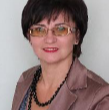International Journal of Information Engineering and Electronic Business (IJIEEB)
IJIEEB Vol. 10, No. 1, 8 Jan. 2018
Cover page and Table of Contents: PDF (size: 459KB)
Determination of Reproduction Accuracy of Dot Area of Irregular Structure
Full Text (PDF, 459KB), PP.9-15
Views: 0 Downloads: 0
Author(s)
Index Terms
Raster element, discrete screening, number of gray tones, raster elements of irregular structure, discrete unit of area
Abstract
The paper deals with the analysis and calculation of the impact of raster element structure on the reproduction accuracy of the area.
The process of screening is one of the important stages of preparing images for printing. Depending on the method of forming of an area of a printing element are distinguished: continuous, which is conventionally called analog screening, and screening with their discrete variables - digital screening. Digital screening systems are widely used in computer publishing systems. In the digital screening of forming shape and sizes of raster elements carried out discrete using raster image processor (RIP).
A well-known fact is that the value of the dot area is a key information-bearing parameter of discrete screening since reproduction of halftone key in a raster image is carried out by changing the dot area. It is therefore an important and relevant task to determine the dot area.
Cite This Paper
Mykola Logoida, Bogdana Havrysh, Doroshenko Anastasiya, "Determination of Reproduction Accuracy of Dot Area of Irregular Structure", International Journal of Information Engineering and Electronic Business(IJIEEB), Vol.10, No.1, pp. 9-15, 2018. DOI:10.5815/ijieeb.2018.01.02
Reference
[1]Damera-Venkata Niranjan, Brian L. Evans, ,(2001), FM halftoning via block error diffusion, International Conference On Image Processing ,volume 3.
[2]Valdec D.1 , Vusić D.2 , Tomiša M.3, “XM SCREENING TECHNOLOGY” ”, [Online]. Available: https://bib.irb.hr/datoteka/317114.XM_SCREENING_TECHNOLOGY.pdf.
[3]Logoyda M. Simulation process of discrete formation of square raster element of non-regular structure [J]. Technological Complexes, 2015, 1 (11): 36 – 43.
[4]Peter G. Martin “Pre-press and color in Gimp”, [Online]. Available: http://www.fifi.org/doc/gimp-manual/html/Prepress.html.
[5]AM-FM-Hybrid-Screening [Online]. Available: https://wftprintpm.wikispaces.com/AM-FM-Hybrid-Screening.
[6]XM (Cross Modulated) Screening Technology [Online]. Available: https://agfagraphics.com/gs/usa/en/binaries/wp_xm_screening_technology_en_tcm639-37129.pdf.
[7]Lutskiv M, Logoyda M, Dzhuguryan T. O określeniu liniatury rastra i liczby poziomów szarości [J]. Świat druku, 2015, 4: 74 – 76.
[8]Gordon Pritchard, “Hybrid AM Screening/XM Screening” Online]. Available: https://www.flexoglobal.com /flexomag/09-May/flexomag-Pritchard.htm.
[9]Krishna Gopal Dhal, Iqbal Quraishi, Sanjoy Das, “A Chaotic Lévy flight Approach in Bat and Firefly Algorithm for Gray level image Enhancement, International Journal of Image, Graphics and Signal Processing, vol. 7, pp. 69-76, 2015.
[10]Logoyda M. The accuracy of the area reproduction of square dots in the discrete formation [J]. Scientific papers, 2015, 1 (50): 37 – 44.
[11]Lutskiv M, Logoyda M, Synthesis of the discrete raster conversion for irregular frames square elements [J]. Scientific papers, 2015, 2 (51): 49 – 57.


